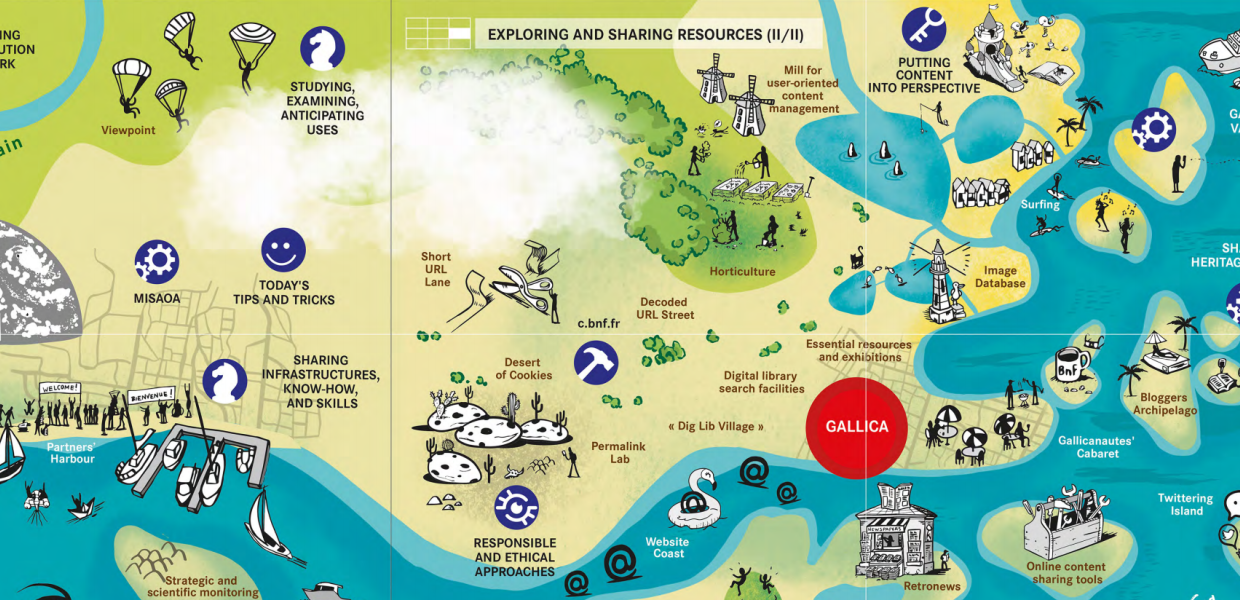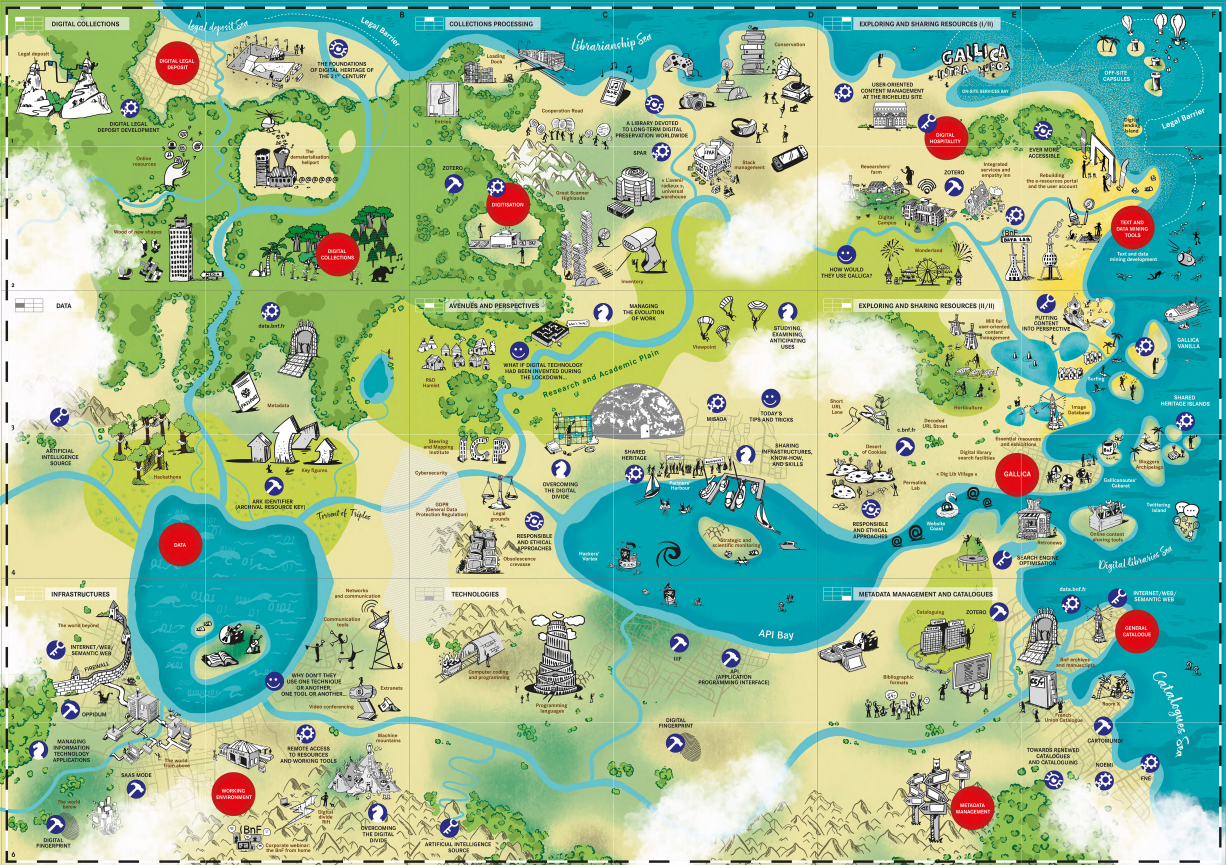What are the key points of the new strategy?
Five strategic priorities have been defined:
- Managing the evolution of work
- Studying, examining and anticipating uses
- Sharing infrastructures, know-how and skills
- Managing information technology applications
- Overcoming the digital divide
They are complemented by a five-fold vision for the future (see more).
Europeana and the BnF have worked together for over a decade. How is the partnership reflected in the strategy?
If you look closely, you will see partners right in the middle of the map, just near the cartographers at work… Partnership is indeed a key point of the Library’s digital strategy. Europeana is one of the best examples, as stressed in the fact sheet dealing with IIIF (in French), a technology that helps make any digital library more user-friendly. Topics such as putting content in perspective or developing tools to explore content also echo the Library’s multifaceted work with Europeana.
What change do you hope to see for the BnF as a result of the new digital strategy?
This strategy rests on core concerns such as access, finding tools that meet current needs, and engaging audiences. So the 2016 Digital roadmap isn’t completely outdated! The 2020 Roadmap displays a panoramic and comprehensive view of the Library’s digital life in order to help people find their way and work together in this complex ecosystem day-to-day. What is important is to stay curious, smart and resourceful in such areas, and to be ready to go further, to deepen your knowledge. In that respect, the 2020 Digital Roadmap represents an invitation, first designed for the BnF’s staff but also available to anyone, worldwide.
How does the strategy address building capacity for digital skills?
In 2019, we quickly realised that it wouldn’t be enough to launch a document: you have to organise workshops and presentations so that people can talk together. A human approach is necessary when dealing with skills improvement, especially in the digital area. Indeed, the map has already been proven to be a relevant background for debates and explanations. For instance, at the Library, the roadmap has been added to the ‘welcome kit’ for new staff members. One of the major strategic axes of the Roadmap is ‘Managing the evolution of work’ and relates to training and recruitment processes, but the Roadmap itself also contributes to such an evolution.
You’ve used a very visual approach to promoting the strategy - with a map and a set of cards. Why did you choose this approach and how have staff and stakeholders reacted to it?
The medium chosen in 2020 is quite unusual, drawing inspiration from both the Library’s collections of maps and plans, and from card games. People are seduced by the beauty of the map (you can see it on the walls in many places in the Library), they reuse its drawings in other documents and want to play with the cards. The method is very inspiring too and gives new ideas to our colleagues. But people also tell us that the map is not so easy to understand. We considered making the whole medium interactive, but we also wanted to offer something that could be held in your hands. We hope we’ll soon have the opportunity to propose this rich material to design students: we’ll see how they transform it!



